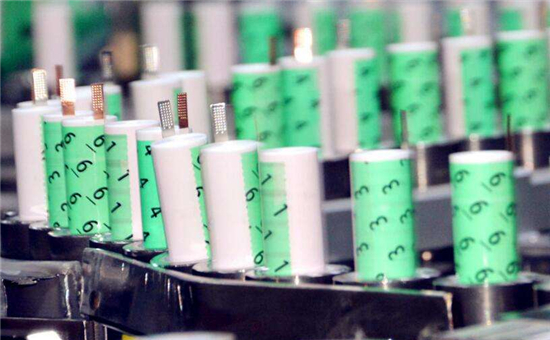Lithium Battery Bomb-safety Alarm
Oct 09, 2019 Pageview:1504
A bomb is generally any explosive weapon. These weapons use the exothermic reaction of combustible material to provide an extremely violent release of energy. Bombs don’t necessarily have to include wild military inventions such as grenades, orspecial warheads large enough to clear a whole city. The simple fact that people tend to ignore is that some of the conventional daily devices they use can sometimes be as dangerous. From your simple android device to the remote that controls your entertainment, these gadgets are equipped with cells that can be reactive if mishandled.?
Battery packs, especially lithium-ion ones, may seem to be today’s power and energy solution. However, if such cells are mistreated in the right way, there may be no difference between them and other dangerous explosives. This is theoretically and experimentally factual since reactive substances were included in the invention of those batteries. As much as their quantities may broadly differ and seem extremely low in lithium cells, their reactive capabilities remain the same. Just as a landmine blows up a vehicle, a seemingly “harmless” device such as your mobile phone can cause fatal consequences as well.?
Is lithium-ion battery a “mini-bomb” in your pocket?
Since their creation, there have been increasing incidental reports of mobile phone-related injuries, and all this has to do with lithium-ion batteries. Well, lithium batteries may be widely used in a variety of devices, but the most common and widespread of them all are in the mobile cells. These gadgets are just the tip of the iceberg because the lithium-ion batteries power bigger and more powerful equipment. From digital cameras, laptop computers, and, more recently, the famous hybrid electric cars, such batteries pose the potential of a much more massive explosion and injuries.?
Today, the design of sleek mobile phones and laptops makes them more attractive to the eyes of any user. This is possible thanks to the lithium-ion batteries installed in such devices to provide such high sustaining power. However, with every rose comes to its thorn, and, the potential of these lithium cells to produce large amounts of heat have been widely reported. The manufacturers rely on a safety measure known as a “separator” to reduce the risk of a short circuit. If such incidences were to occur, it would produce an exothermic reaction and, in extreme and rare cases, an explosion.?
Human is to error, and at times, the safety feature in lithium battery packs tend to be faulty in damaged or fake phones. They might also be eroded in batteries that may have been overused or overcharged for long periods. There is thus need for greater public awareness to reduce the risk and victims of spontaneous battery combustion. One should always be careful about the devices, containing lithium-ion batteries, and they tend to carry in their pockets. Such gadgets, if carelessly handled like a child’s toy, may turn out to be a ticking time bomb posing dire consequences.?
What chemicals are in lithium-ion batteries?
Before one fixates on the chemical composition of lithium-ion batteries, they need to familiarize themselves with the four essential components of such cells. Lithium-ion batteries mainly consist of four critical components: cathode, anode, separator, and electrolyte. Each of these elements is essential since the whole cell cannot function in the absence of any of the four. The function of the cathode is to determine the capacity and voltage present in a lithium-ion battery. On the other hand, the anode is responsible for directing the electrons through a wire which is enabling electricity to flow through the external circuit.
The separator acts as the wall or barrier between the cathode and anode hence preventing short circuits. Finally, the electrolyte only allows the movement of electrical ions between the anode and cathode to facilitate the transfer of electricity.
Now, as the name suggests, lithium ions are involved in the chemical reactions that drive the battery. Both electrodes in lithium-ion cells are made of a material that can absorb these ions. The lithium in these cells is, however, not pure but rather, a less reactive compound of lithium. This is because pure lithium will instantly react with water or even moisture in the air, and the reaction may end up being exothermic. The electrolyte in a lithium-ion battery is a solution of lithium salts in a mixture such as dimethyl or diethyl carbonates.
The electrodes are made of an intercalated lithium compound at the positive electrode and standard graphite at the negative one. The anode is carbon-based, while the cathode is made up of lithium cobalt oxide.
How do you monitor your lithium battery?
With so much of the work with the applications of lithium batteries, there is a need for the close monitoring of lithium batteries. This is especially when it comes to high-end applications such as in the electric vehicle, which requires close and extreme monitoring before they are released. This is the reason such battery packs are always equipped with a battery management system (BMS). The BMS comprises of different hardware and software necessary for battery management. The continuous inspection of battery states during its operation by the BMS is called battery monitoring.
There is a feature that monitors the voltage on a battery and indicates whether the power levels are low. This is referred to as a battery monitor. It is usually installed using a comparator to compare the battery voltage to a certain degree. A battery monitor may not seem as necessary, but then again, neither is a fuel gauge for driving, yet it still helps big time. The battery monitor keeps you updated on three primary keys of information:
· Net current entering and leaving the cells
· The percentage of battery remaining
· The voltage of the batteries
The BMS for lithium batteries on mobile phones is implemented in your phone’s management system. It allows you to track or monitor your battery’s operation and functionality, giving a heads up on the necessary action to take. Most users tend to ignore such available information, which is part and person of battery monitoring.
Final thoughts
Since the dawn of their creation, batteries have served as a legendary boost to the evolution of man. Their applications spread far and wide and are, therefore, the current driving force of life in this era. However, as much as they are of significant use to us, they can also be lethal if mishandled. Yes, a lithium battery may be dangerous, but the danger only exists if the user fails to handle the cells in the right way carefully.
- Prev Article: Lithium Battery Hazard Class
- Next Article: Lithium Battery Trickle Charge
Leave Message
Hottest Categories
-
Hottest Industry News
-
Latest Industry News











